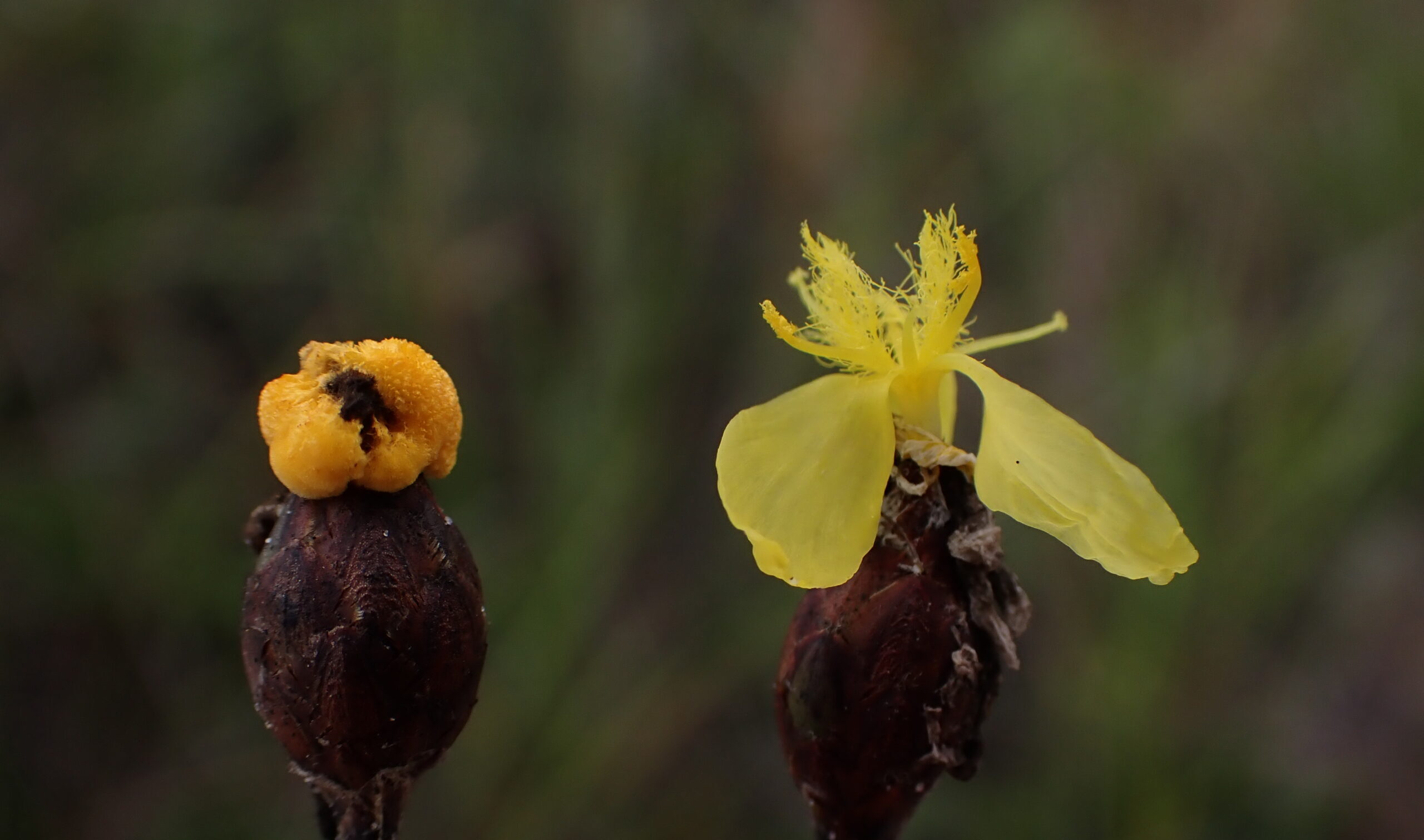
Coffee Leaf Rust
What are rusts?
Rust fungi (Pucciniales) are obligate phytopathogens with highly complex life cycles producing up to five different spore stages and many require an alternate host to sexually reproduce. Their ability to quickly spread by traveling long distances via wind and their complex life cycles with multiple spore types allow them to rapidly evolve new strains quickly overcoming host resistance and generating epidemics across the globe.
What is Coffee Leaf Rust?
Coffee leaf rust (CLR) is the most important fungal disease threatening coffee production worldwide. It was first observed on wild coffee in the Lake Victoria region of Kenya in 1861.
Coffee is one of the most widely traded agricultural commodities worldwide, and its production is dominated by smallholder farmers that support the livelihoods of ~100 million people globally. CLR epidemics represent a significant economic burden to low-income countries across the world with smallholder farmers and farm workers being the most affected. Despite CLR being discovered more than 150 years ago, many unknowns regarding its spread and persistence across the tropics remain to date.
What causes it?
The rust fungus Hemileia vastatrix (Hv) is the causal agent of the recurrent CLR epidemics that have affected all major coffee growing regions of the world. CLR is the most devastating disease of coffee, since it can massively produce urediniospores that continue to reinfect plants. These urediniospores can travel through the air by wind and rain and be carried on people’s clothing to new locations.
Why study CLR?
Hv reproduces clonally throughout most of its host range and its complete lifecycle remains unknown. Our recent work on Hv population genetics using 12 microsatellites and sampling from 20 countries, including historical specimens ranging from 1895 to the present, has revealed multiple unique genotypes at its potential center of origin, hinting at the possibility of recombination occurring on a separate undiscovered host in this geographic region.
Hemileia species are known from either the uredinial or telial stages, while aecia and spermogonia have not yet been found for any member of this genus. Hemileia is in the family Zaghouaniaceae, the second oldest clade in the Pucciniales phylogeny. Our work has the potential to unlock the pool of knowledge for alternate hosts in Hemileia as well as provide critical information for the Zaghouaniaceae, the first place where urediniospores (drivers of cyclical evolution) are seen in the rust tree of life.
Discovering the alternate host of Hv represents a powerful tool to advance our understanding of the genetics of this rust fungus and provides key information for the development of improved strategies for better control of CLR. Additionally, it will inform management decisions regarding the proximity of the alternate host to coffee farms around the world to help reduce the potential for generating novel virulence combinations.

Fusarium Pseudoflowers
What are pseudoflowers?
Certain fungi that interact with plants can produce structures that resemble flowers or parts of flowers. These structures are usually called pseudoflowers.
Fusarium pseudoflowers
Botanical fieldwork conducted in western Guyana in 2012 by Kenneth Wurdack revealed the presence of flower-like structures on three yellow-eyed grasses (Xyris setigera, Xyris surinamensis, and Xyris bicephala). Molecular work led to determining that these structures were produced by a novel Fusarium species. This discovery was reported and the fungus described as Fusarium xyrophilum by Laraba et al. 2019.
This is the first report of a Fusarium species producing potential pseudoflowers on a plant host, which raises an array of questions about the epidemiology of the fungus, how it affects the plant, and its potential involvement in insect attraction.
My PhD research project aimed at collecting information about the interactions between Fusarium xyrophilum and yellow-eyed grasses to determine whether this is a new mimicry system by:
- Characterizing the disease caused by F. xyrophilum on yellow-eyed grasses based on field observations (signs, symptoms, environmental conditions).
- Determining the main dispersal mechanisms of F. xyrophilum by evaluating its presence in soils, healthy and infected plant tissue, inflorescences, and insect visitors; and testing the potential mechanisms in greenhouse experiments.
- To determine if F. xyrophilum alters the attraction of insect visitors to Xyris by comparing insect visitation and production of volatile compounds between pseudoflowers and true flowers; and determining if these insects carry F. xyrophilum on their bodies.
- To evaluate the presence of other microorganisms (bacteria and fungi) in the production of pseudoflowers by analyzing the microbial communities on pseudoflowers and true flowers.
- To increase our understanding of how F. xyrophilum manipulates its host plant at the molecular level by analyzing the transcriptome of uninfected vs. infected Xyris
